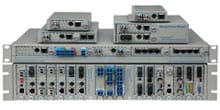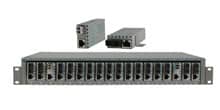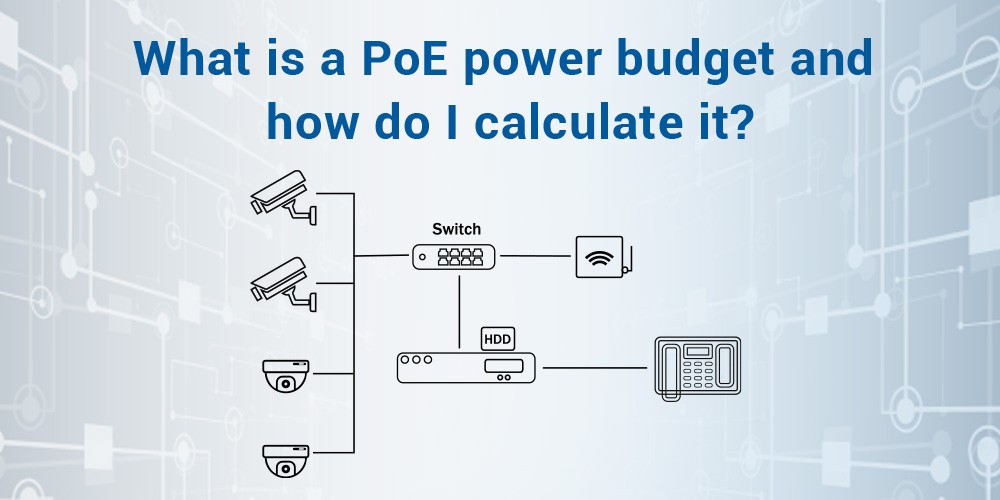- Products
- PoE Media Converters and Switches
- Ethernet & PoE Switches Product Selector
- Multi-Gigabit Ethernet and PoE Switches
- PoE PSE Commercial Switches
- PoE PSE Industrial Fiber Switches
- PoE Industrial Copper Extenders
- PoE Powered Media Converters
- PoE PSE Media Converters
- PoE Extenders & Injectors Product Selector
- Pluggable Transceivers Product Selector
- Product Lines

- iConverter Managed Multi-service Platform
- Copper to Fiber Media Converters
- Ethernet Media Converters
- 10 Gigabit Copper-to-Fiber
- 10/100/1000 Copper to 10 Gigabit Fiber
- 10/100/1000 Copper-to-Fiber with Integrated Management
- 10/100/1000 Industrial Copper-to-Fiber with Integrated Management
- 10/100/1000 Copper-to-Fiber with VLAN
- 10/100/1000 Dual Media Converter with VLAN
- Gigabit Copper-to-Fiber
- 10/100 Copper-to-Fiber with Integrated Management
- 10/100 Industrial Copper-to-Fiber with Integrated Management
- 10/100 Copper-to-Fiber with VLAN
- 10/100 Copper-to-Fiber
- Fast Ethernet Copper-to-Fiber
- Fast Ethernet Redundant Links
- 10Mbps Copper-to-Fiber
- 10Mbps Copper to Coax
- TDM Media Converters
- Serial Media Converters
- Ethernet Media Converters
- Fiber to Fiber Media Converters
- 10 Gigabit Fiber-to-Fiber Converter and Transponder
- 10 Gigabit Industrial Converter and Transponder
- SFP-to-SFP Fiber Converter and Transponder
- SFP-to-SFP Industrial Fiber Converter and Transponder
- Gigabit Fiber to-Fiber with 3 Rs
- 100/1000 Fiber-to-Fiber with 3 Rs
- Gigabit Fiber-to-Fiber
- Fast Ethernet Fiber-to-Fiber with 3 Rs
- Fast Ethernet Fiber-to-Fiber
- OC-3/STM-1 Fiber-to-Fiber
- OC-12/STM-4 Fiber-to-Fiber
- Carrier Ethernet Network Interface Devices
- CE 2.0 - 10G Demarcation NID
- CE 2.0 - 10G Demarcation and Aggregation NID
- CE 2.0 - 10/100/1000 Mult-port NID
- CE 2.0 - 10/100/1000 Mult-port NID with PoE
- CE 2.0 - 10/100/1000 8-Port NID
- SFP NID - Gigabit SFP NID
- microNID - 100/1000 compact NID
- CE 1.0 Service OAM - 10/100/1000 NID
- CE 1.0 Link OAM - 10/100/1000 Copper-to-Fiber NID
- CE 1.0 Link OAM - 10/100 Copper-to-Fiber NID
- CE 1.0 Link OAM - Gigabit Fiber-to-Fiber NID
- CE 1.0 Link OAM - Fast Ethernet Fiber-to-Fiber NID
- CWDM Multiplexers
- T1/E1 Multiplexers
- Ethernet Switch Modules
- Management System
- Chassis Options

- 1-Module Industrial Chassis

- RuggedNet Industrial Switches and Extenders
- Industrial PoE PSE Fiber Switches
- Multi-Gigabit Managed Industrial PoE+/BT Switches
- Multi-Gigabit Unmanaged Industrial PoE+/BT Switches
- 10G Managed 802.3bt PoE Switches
- 10G Unmanaged 802.3bt PoE Switches
- 10G Managed PoE+ Switches
- 10G Unmanaged PoE+ Switches
- 1G Managed PoE+ Switches
- 1G Unmanaged PoE+ Switches
- 1G Unmanaged 802.3bt PoE Switches
- 1G Managed 802.3bt PoE Switches
- Industrial Ethernet Switches
- Industrial PoE Copper Extenders
- Industrial Power Supplies

- OmniConverter Media Converter, Switches and Extenders
- PoE PSE Media Converters
- 10G Multi-Gigabit / Multi-Rate PoE Media Converter
- 10G Multi-Gigabit / Multi-Rate Media Converter
- 10/100 Multi-port PoE+ Media Converter
- 10/100 PoE+ Media Converter
- 10/100/1000 Multi-Port PoE+ Media Converter
- Industrial 10/100/1000 Multi-Port PoE+ Media Converter
- 10/100/1000 PoE+ Media Converter
- 10/100/1000 PoE++ 60W-100W Media Converter
- Industrial 10/100 Multi-port PoE+ Media Converter
- 1U Rack-Mount Shelf
- PoE PSE Compact Switches
- Multi-Gigabit Managed PoE+/BT Switches
- Multi-Gigabit Unmanaged PoE+/BT Switches
- 10G Managed 802.3bt PoE Switches
- 10G Unmanaged 802.3bt PoE Switches
- 10G Managed PoE+ Switches
- 10G Unmanaged PoE+ Switches
- 1G Managed PoE+ Switches
- 1G Unmanaged PoE+ Switches
- 1G Managed 802.3bt PoE Switches
- 1G Unmanaged 802.3bt PoE Switches
- Ethernet Switches
- PoE Copper Extenders
- Single Pair Ethernet Converters
- PoE Injectors

- miConverter Unmanaged Miniature Media Converters
- 10/100/1000 Copper-to-Fiber
- Industrial 10/100/1000 Copper-to-Fiber
- 10/100/1000 Ultra-Compact Copper-to-Fiber
- Gigabit Copper-to-Fiber
- 10/100/1000 Copper-to-Fiber PoE Powered
- 10/100 Copper-to-Fiber
- 10/100 Ultra-Compact Copper-to-Fiber
- 10/100 Copper-to-Fiber PoE Powered
- 18-Module Chassis
- Industrial 10/100 Copper-to-Fiber PoE Powered

- FlexSwitch Compact Switches
- Solutions
- Company
- Support
- How to Buy
What is a PoE Power Budget and How Do I Calculate it?

PoE (Power over Ethernet) power budget refers to the maximum amount of power that can be delivered over a single Ethernet cable to power PoE-powered devices (PDs) such as IP cameras, VoIP phones, and wireless access points.
PoE (Power over Ethernet) technology simplifies device installation and eliminates the need for separate power cables by allowing both data and power to be transmitted over a single Ethernet cable. However, understanding and managing the power requirements of PoE devices is crucial to ensuring a stable and efficient network. In this article, we'll delve into the concept of a PoE power budget, its significance, and how to accurately calculate it.
Why Knowing Your PoE Power Budget Matters
Knowing your PoE power budget is crucial for the proper functioning, efficiency, and safety of your network, allowing you to make informed decisions during installation, expansion, and maintenance, all while preventing potential problems and optimizing the performance of your PoE-enabled devices.
- Proper Device Operation:
Understanding your PoE power budget ensures that you provide adequate power to all the connected devices. If the power budget is exceeded, devices may not function properly or could even shut down, leading to network disruptions and critical services going offline.
- Preventing Overloads:
Exceeding the PoE power budget could overload the PoE (Power over Ethernet) switch, causing it to malfunction or even fail. This can result in costly downtime, maintenance, and replacements.
- Planning and Scalability:
By knowing your power budget, you can plan your network deployment effectively. In addition, you can determine the number and type of PoE devices you can safely connect, helping you avoid unexpected limitations as you expand your network.
- Compatibility:
Different PoE (Power over Ethernet) standards provide varying levels of power delivery (e.g., PoE, PoE+, PoE++). Knowing your power budget ensures that you select devices that are compatible with your PoE infrastructure, preventing mismatched expectations and potential damage.
- Troubleshooting:
When network issues arise, understanding your PoE power budget can help diagnose any issues related to power distribution. If the devices are not functioning correctly, checking the power budget can provide insight into whether a faulty power supply is causing the issue.
- Maintenance and Upgrades:
When performing maintenance or installing upgrades, having a deep understanding of your PoE power budget will help make sure that the new devices or configurations stay within the limits of your network infrastructure.
Calculating PoE Power Budget; Factors to Consider
When calculating the PoE power budget, several factors need to be considered, such as:
- Power Supply Capacity: Begin by identifying the total power output capacity of the PoE switch. This is usually indicated in watts (W) and can typically be found in the device's specifications or user manual.
- Number of PoE Ports: Count the number of ports on the PoE switch that are capable of delivering power (PoE-enabled ports). Each of these ports has a specific power allocation that can be delivered to a connected device.
- Power Allocation per Port: Different PoE (Power over Ethernet) standards provide different power levels. The power allocation per port depends on the PoE standard supported by the PoE switch.
- PoE Classes: Power over Ethernet (PoE) classes refer to the different power levels that can be delivered over Ethernet cables to PoE-enabled devices. These classes help standardize power capabilities and requirements, ensuring compatibility between PoE switches and the devices they power.
| PoE Standard | PoE Type | Class | Input Power to PD | Output Power from PSE |
|---|---|---|---|---|
|
IEEE 802.3af |
PoE |
0 |
12.95W |
15.4W |
|
PoE |
1 |
3.48W |
4W |
|
|
PoE |
2 |
6.49W |
7W |
|
|
PoE |
3 |
12.95W |
15.4W |
|
|
IEEE 802.3at |
PoE+ |
4 |
25.5W |
30W |
|
IEEE 802.3bt |
PoE++ |
5 |
40W |
45W |
|
PoE++ |
6 |
51W |
60W |
|
|
PoE++ |
7 |
62W |
70W |
|
|
PoE++ |
8 |
73W |
95W |
How to Calculate the PoE Power Budget?
Determine the power requirements of the PDs you plan to connect to the PoE ports. Each PoE-enabled device comes with specific power requirements. Not all devices require the same amount of power. For instance, an IP camera might have different power requirements than a VoIP phone. This information is typically provided by the device manufacturer and measured in watts (W).
Below is an example using simple estimates for the power consumption of each device type/quantity:
| Powered Device | Number of Devices | Max Power Consumption | Total Power Consumption |
|---|---|---|---|
|
Wireless Access Point |
1 |
20W |
20W |
|
VoIP Phone |
2 |
7W |
14W |
|
PoE Lightning |
5 |
15W |
75W |
|
Total |
8 |
- |
109W |
After determining the maximum Power Consumption of Powered Devices (PDs), and power that must be provided by the PoE Switch, or PSE source will ensure that sufficient power to the connected devices without exceeding its power capabilities.
Continuing the example, for the Total Power Consumption of 109W, and the number of connected devices, we can determine the best choice from our choice of switches below :
| Product | Port Number | Uplink Ports | PoE Ports | Max PoE Per Port | Total PoE Budget |
|---|---|---|---|---|---|
|
5 or 6 Ports |
1/2 Fiber or 2 RJ-45 |
4 RJ-45 Ports |
100W |
400W |
|
|
5 to 10 Ports |
1/2 Fiber or 2 RJ-45 |
8 RJ-45 Ports |
30W |
240W |
|
|
5 or 6 Ports |
1/2 Fiber or 2 RJ-45 |
4 RJ-45 Ports |
100W |
400W |
|
|
5 to 10 Ports |
1/2 Fiber or 2 RJ-45 |
8 RJ-45 Ports |
30W |
240W |
We will require a total of eight PoE ports. The power consumption of each device is under 30W, so we can determine that PoE+ is required.
In this case, the power budget is well below the output of any of the switches listed so the selection will come down to the number of ports and consumption of each device.
The OmniConverter GHPoEBT models will feature a much higher Total PoE Budget but will not meet the required number of ports.
The OmniConverter GPoE+/M (Managed) or GPoE+/Sx (Unmanaged) will meet both requirements. The final model selection will be determined by features unrelated to PoE budgeting.
Conclusion
By managing your PoE power budget effectively, you ensure the seamless operation of various powered devices while avoiding potential pitfalls. Remember, a well-optimized PoE power budget not only enhances device performance but contributes to the overall reliability and longevity of your network infrastructure.
If you need any help planning your PoE budget or selecting the appropriate PoE switch for your installation, please don't hesitate to contact Omnitron Systems. Call us now!









